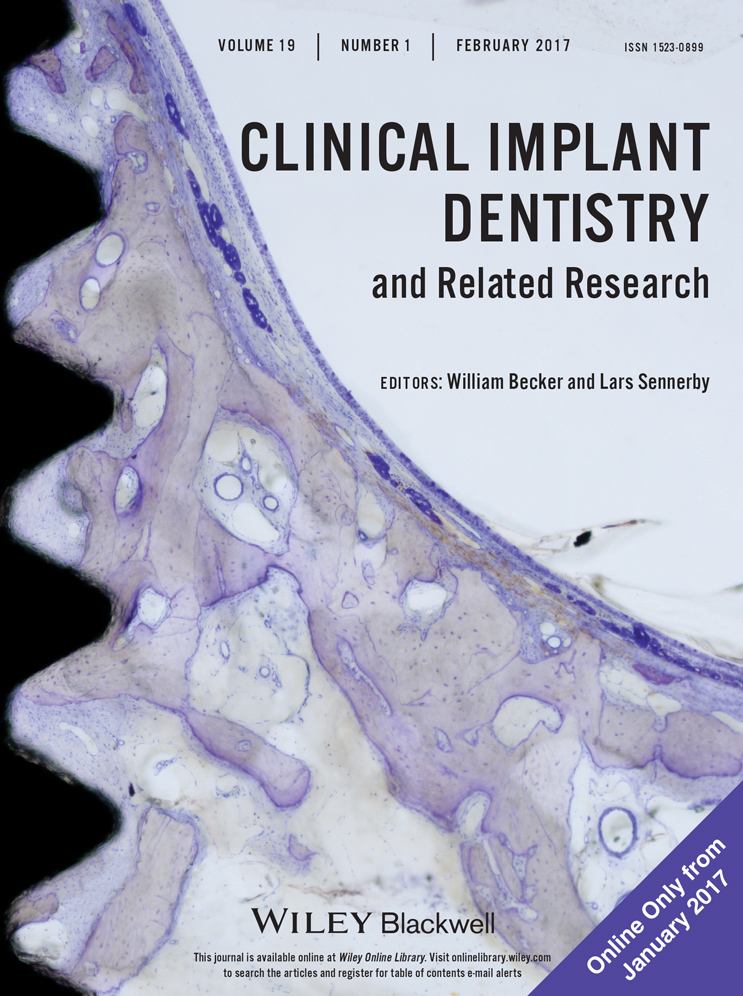Immediate Implant Placement in Sockets with Asymptomatic Apical Periodontitis
Abstract
Background
The purpose of the present study was to evaluate if the presence of granulation tissue in asymptomatic apical periodontitis compromised immediate implant placement.
Methods
Patients requiring extraction of one tooth (maxillary and mandibular incisive, canine or premolar) with asymptomatic apical periodontitis, were recruited for this prospective study. They were randomly scheduled into two groups: in first group (A) including 30 teeth, reactive soft tissue was debrided before implant placement, and in second group (B) including 30 teeth, reactive soft tissue was left in the apical lesion. Implants were positioned immediately after tooth extraction, and were loaded after 3 months in both groups. Cone beam computed tomography was performed before tooth extraction and at 1-year follow-up to evaluate the radiolucency around the root apex and the implant, bucco-lingual bone levels were also checked.
Results
Sixty patients were included in this study. Sixty implants were placed immediately after tooth extraction and, at 1-year follow-up, a survival rate of 100% was reported. After one year both groups showed absence of radiolucent zone at the apical region of implants. All fresh sockets presented a buccal-palatal bone reduction in both groups after one year, even if not statistically significant differences were found between baseline bone levels and within groups.
Conclusions
Within the limitations of the present study, the immediate placement of implants into the extraction sockets with asymptomatic apical periodontitis, in presence of primary stability, did not lead to an increased rate of complications and rendered an equally favorable type of tissue integration.




